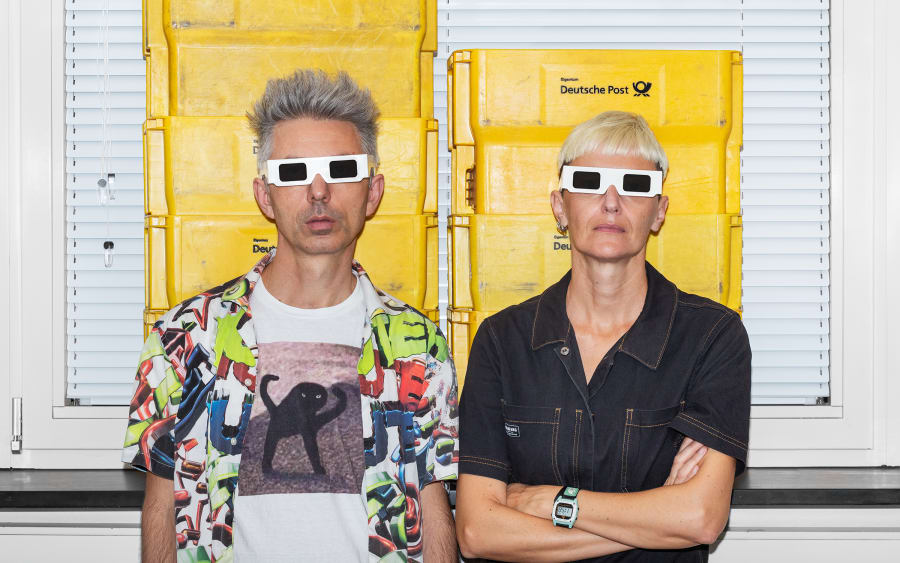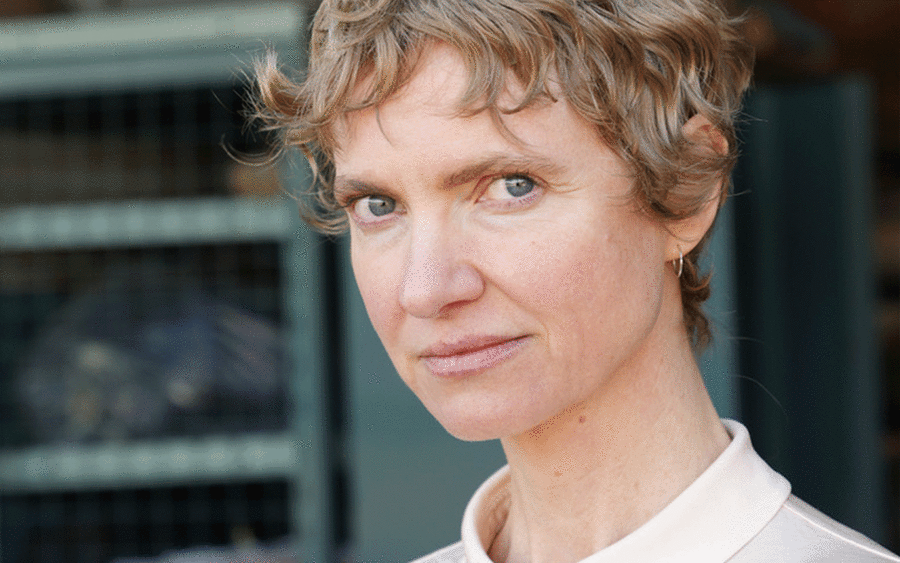‘I grew up as a Catholic in a world of images. In church there were stained glass windows, and the priests wore elaborate clothing for mass; there were decorative accoutrements of all kinds. It was a very visual environment and it entranced me from an early age.
‘But, by the age of around 12, I was interested in everything that was Modern; designs by Le Corbusier and Mies van der Rohe; books on the Bauhaus. Even though I was born in Dublin, I grew up in Washington DC, in 1950s America. It was the golden age of the American car, with fins and two-tone paintwork – so glamorous. The cars changed every year, and I could still tell – even now – a ’55 Ford, from a ’56, or a ’58. If the modern world had been created in Europe in the 1920s and 1930s, it became a reality in Postwar America.
‘DC is a very odd, provincial city. The buildings are dispersed, there are no tall ones, and there are a lot of parks. It’s a one-horse town, with no manufacturing, only government. Every time there’s a change of administration, one group leaves, and a new one arrives. My parents were educated people, but there was no art in our lives except a good reproduction of a painting by Pablo Picasso that hung in the living room: a child eating from a bowl. I used to sit looking at it for hours.
‘I went to a small high school, started to make things, and got interested in painting. I was less of a drawer, more of a maker. I’m a constructor, I put things together. Then, when I was 14 or 15, my father’s job took the whole family to Bogotá, Colombia for a year. He was an economist at the World Bank, involved with agricultural reform in the Third World. My parents became part of a group of diplomatic expats and met a Spanish artist, Juan Antonio Roda, who was in exile from Franco’s Spain and had married a Colombian. I started to do drawing classes at his home – me and three or four middle-aged women.
‘Roda showed me that you could exist as an artist. You didn’t have to be Picasso or Rembrandt. You could have a family and live modestly, but not badly. It was much more seductive than my father’s world, and anyway I was terrible at math. I think my desire to be an artist started there, and my parents supported it because they knew Roda too.
‘I discovered the Impressionists, and then I discovered people like Marcel Duchamp. That was important: I was taken with the idea of the radical and the naughty – things that were beyond the ordinary. I think I was an aesthete, just interested in the look of things.
‘I went to university at Fordham in New York. Partly because I’m Catholic, and also because I wanted to fall into bad ways, and in 1959 or 1960, New York was the best place to do that by far. There were about 10,000 kids there, most of them day students, but the handful of interesting people seemed to find each other. I still have about eight friends from Fordham who are coming to my opening at the Royal Academy in London.
‘I loved the people but everything was wrong for me. I couldn’t figure it out and I decided I had to leave, and set my heart on Yale. I was interviewed by an elderly woman, a classic New England spinster, with her hair in a bun. At the end, she said, I can understand why you wish to leave Fordham but I have no idea why we would wish to have you here. It was only after that, that I realized all I wanted to do was be an artist, so I found a derelict room at Fordham and turned it into a studio and started to make little oil paintings.
‘When I decided I needed to go to the best art school there was, I went back to Yale for advice – that woman had been so brutally honest with me. They pointed me in the direction of their art school and I thought I was dreaming. I didn’t know places like that existed – full of workshops and students.
‘I went to the [Académie de la] Grande Chaumière in Paris for the summer – it was where you went in those days. I did hundreds of hours of life drawing, once again in a room full of middle-aged ladies. The models were very striking. They could do 60 poses in an hour, or they could hold a pose for three hours. If they did a lot of poses, they would turn so that wherever you were sitting you were given a different point of view. I was very impressed by that. It’s the same way that in France a waiter is a profession which commands respect. In America a model was someone who took their clothes off.
‘Once I got to Yale, I found that the art school was a graduate school. Me and four or five other undergraduates were thrown in with people who had been at school for years. I just tried hard not to embarrass myself, to hold my own, and take up every challenge thrown at me.
‘In my first year, I was in the same studio as Richard Serra and he was so supportive of me – this young, madly enthusiastic person. Brice Marden and Chuck Close took an interest in me too. I had nothing to measure them against, but I knew they were really good. Serra was the first to become well known internationally.
‘Josef Albers had set up the department, including four courses which I took. I’m still heavily influenced by what I learnt then. The way I draw comes from there, my use of color, my sense of materials. I owe my life to Yale and by extension to Albers.
‘I started the work I’m known for today – the paintings with the tape-drawn black line and the vibrant colors – in 1995, when I was 55. My subject matter is obvious – man-made objects, useful things. But that’s not what my work is about. It is about an exploration of the miracle of two-dimensional imagery. I play with narrative by denying narrative. I play with color by denying it, by emphasizing it in different ways. It’s not a game, but it is play. Once it’s complete, the work has become its own thing, it is the idea. It then gives off or emanates ideas. People think the original idea is the most important, but actually it’s to look at the thing.
Albers did the first ‘Homage to the Square’ when he was 60. He’d had a whole lifetime of doing other things, but that was what made him famous. People find their voice at different stages, and I found mine in my 50s.
Michael Craig-Martin is represented by Gagosian (New York, Basel, London, Geneva, Hong Kong, Paris, Rome, Athens, Beverly Hills) and Cristea Roberts Gallery (London).
Michael Craig-Martin
Royal Academy of Arts, London
From September 21 to December 10, 2024
Caroline Roux is a London-based writer and a regular contributor to the Financial Times, The Art Newspaper, and Galerie magazine.
Caption for top image: Portrait of Michael Craig-Martin by David Vintiner.
Published on September 23, 2024.


